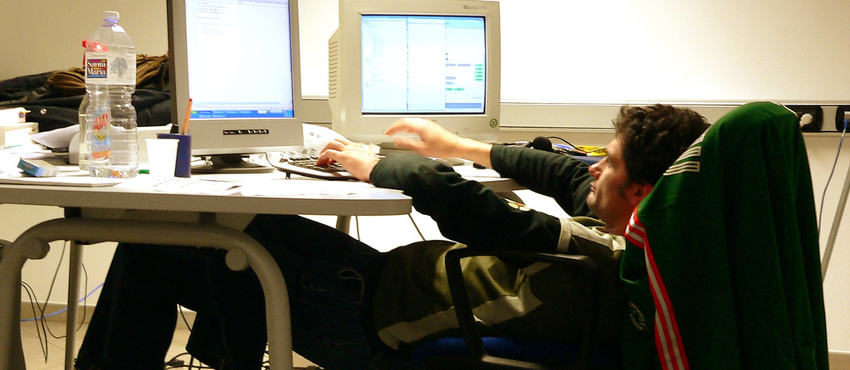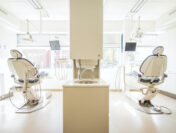Offices aren’t the healthiest environments. There’s the HVAC that circulate any viruses, molds or bacteria in the air – so that the cold someone brings in on Monday makes its rounds to everyone in the office by Wednesday; there’s the overhead lighting that manages to be both harsh and inadequate at the same time; and there are the desks, chairs and workstations that seem to encourage bad posture. Of all the hazards the typical office worker faces, the desk and chair situation could actually be the worst.

Colds are seasonal, many desks have task lighting that counteracts the overheads, and the HVAC system should get services regularly to clean the filters and keep the air fairly clean.
But desks and chairs are an everyday thing, and every day workers put their spinal health, and overall health, at risk by sitting in them for several hours at a time.
Luckily, there’s something called ergonomics that can help everyone sit healthier and be more productive.
What is Ergonomics?
In a nutshell, ergonomics is a way of doing things to ensure maximum efficiency with the minimum of effort. Although it is often used in an office context, ergonomics actually applies to all facets of our lives. It’s the way you get in and out of your car, and the way you position the seat and headrest when you drive; it’s in the way you carry your groceries; and even in the layout of your kitchen. However, ergonomics is often applied to work because, aside from sleep, it is where we spend the bulk of our time.
Ergonomics in the Office
Office ergonomics actually covers a wide range of topics, from the placement of cubicles to the location of shared resources like printers and copiers. For example, a copy and print room in a central location on a floor is more ergonomically sound than having one located on one end of the building, because everyone in the office can access it efficiently. Conversely, having small print stations evenly distributed in several sections could be even more efficient because everyone in a specific section has easy access to their printer.
When it comes to office ergonomics, workstations and seating are key because they affect workers on a personal level.
Ergonomic Seating
Sitting ergonomically means that you are seated in a way that supports your spine and encourages healthy posture. This does not mean that you have to sit ramrod straight and, in fact, doing so can actually do more harm than good. The spine has natural curves in the neck, torso, and lower back that are crucial to proper spinal health. Sitting in a way that reduces or exaggerates these natural curves can not only hurt your back, it can also cause pain and discomfort in other parts of your body. Ergonomic chairs are adjustable and have cushions that support your natural curves.
Workstation Ergonomics
Workstation ergonomics and seating ergonomics go hand-in-hand. Workstation ergonomics involves making sure your work surface is arranged in an efficient manner and supports the natural alignment of your spine. This includes keeping your monitor at eye level so that you don’t have to hunch forward or tilt your head forward to see your screen; setting the workstation height so that it supports your wrists and hands; and arranging items on the desktop so that you don’t have to reach far, or twist unnaturally to use them properly.
New Developments in Ergonomics
One new development in ergonomics is the use of standing desks in place of the standard seated desk. Healthy Desks, a standing desk manufacturer, suggests that individuals who use standing desks have more energy, increased blood flow, as well as fewer aches and pains and better health overall. Also height adjustable desks from HADO available for you to purchase. These types of desks allows you to choose whether you want to stand or sit whilst at your desk.
Although ergonomic seating and workstations can help, the human spine is not really designed for long periods of sitting. However, the shape of our spine, along with other physiological attributes, is uniquely designed for standing and walking.
Our circulatory system relies on the muscle contractions from walking and standing to help blood flow in the right direction, which helps carry wastes away from our brains and other organs. We also need muscle contractions to maintain good muscle tone, and even to moderate other processes, like the release of insulin from the pancreas.
By using an adjustable standing desk, workers can raise their workstations to stand, and even march in place, to stimulate beneficial muscle contractions; they can also lower the desks to continue working while seated in an ergonomic chair.
Although the concept of using standing desks in an office setting is fairly new, standing desks have actually been around for a long while; and people who work out of home offices often use them in place of standard desks.
Photo credit: Martino Sabia / Flickr




